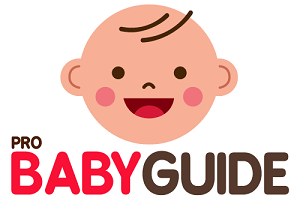Okay, mama, let’s be real. Nighttime breastfeeding can be ROUGH. You’re exhausted, your baby is hungry, and all you want to do is sleep. According to a study published in the journal Pediatrics, around 60% of mothers report waking up at least twice a night to breastfeed their babies. And let’s be honest, sometimes it feels like you’re the only one in the world dealing with this.
But guess what? You’re not alone! We’ve all been there. I’ve had my fair share of 3 AM feedings where I felt like I was running on fumes. But I promise, it gets easier. And in the meantime, there are things you can do to make it a little less crazy-making.
So grab a cup of (decaffeinated!) tea, get comfy, and let’s dive into some survival tips for those nighttime nursing sessions.
1. Create a Cozy Nursing Nook
Think of it like this: you wouldn’t want to eat your dinner in a cold, brightly lit room, right? Your baby feels the same way! A comfy, dimly lit space can make all the difference.
- Dim the lights: A soft nightlight or a salt lamp creates a calming atmosphere and helps your baby understand it’s still nighttime.
- Get comfy: Invest in a comfortable nursing chair or pile up some pillows on your bed. Trust me, your back will thank you.
- Keep essentials close: Water bottle, snacks, burp cloths, nipple cream… whatever you need within arm’s reach! This way, you don’t have to get up and disrupt the flow.
2. Master the Art of Side-Lying Nursing
Side-lying nursing is a game-changer. It lets you nurse while lying down! Once you get the hang of it, you might even be able to catch some Zzz’s while your little one feeds.
- Safety first: Always make sure your baby is lying on their back and that there are no pillows or blankets that could obstruct their breathing.
- Get positioned: Lie on your side with your baby facing you. Use pillows to support your head and neck, and another pillow behind your baby to keep them from rolling away.
- Latch and relax: Help your baby latch on, and then try to relax and let them feed. It might take a little practice, but it’s so worth it!
3. Embrace the Power Nap
Remember how I said it feels like you’re the only one awake sometimes? Well, you kind of are! The world is asleep, so take advantage of it.
- Nap when your baby naps: I know, I know, easier said than done. But even a 20-minute power nap can make a huge difference in your energy levels.
- Don’t worry about the housework: The dishes can wait. Laundry can wait. Sleep can’t!
- Ask for help: If someone offers to watch the baby so you can nap, TAKE THEM UP ON IT!
4. Dress for the Occasion
Fumbling with buttons and snaps at 3 AM is the last thing you need. Choose comfy, nursing-friendly pajamas that make nighttime feedings a breeze.
- Nursing bras: A good nursing bra is essential for easy access and support.
- Button-down shirts or pajamas: These make it easy to nurse without having to completely undress.
- Cozy robe: Perfect for those chilly nights!
5. Stay Hydrated
Breastfeeding can make you thirsty, especially at night. Keep a water bottle by your bed and sip on it throughout the night.
- Avoid sugary drinks: They might give you a temporary energy boost, but you’ll crash later.
- Herbal teas: Some herbal teas, like chamomile, can help you relax and promote sleep.
6. Keep Snacks Handy
Just like you, your baby needs fuel at night! And that means you need to keep your energy up too.
- Healthy snacks: Keep a stash of healthy snacks like nuts, fruit, or whole-grain crackers by your bed.
- Lactation cookies: These are a great way to boost your milk supply and satisfy your sweet tooth. (Just don’t overdo it!)
7. Dream Feed (Maybe?)
Dream feeding is when you feed your baby while they’re still asleep. The idea is that a full tummy will help them sleep longer. It works for some babies, but not so much for others.
- Timing is key: Try dream feeding just before you go to bed.
- Gently rouse your baby: Just enough to get them to latch on, but not so much that they fully wake up.
- Don’t force it: If your baby doesn’t latch or seems distressed, don’t push it.
8. Swaddling or White Noise

Some babies sleep better when they’re swaddled or when there’s white noise in the background.
- Swaddling: Helps your baby feel secure and prevents them from startling themselves awake.
- White noise: This can help to block out other sounds and create a calming environment. There are tons of white noise machines and apps available.
9. Share the Load (If Possible)
If you have a partner, don’t be afraid to ask for help! They can change diapers, bring you the baby, or even just offer some moral support.
- Divide and conquer: Maybe your partner can handle the early morning feedings while you get a few extra hours of sleep.
- Teamwork makes the dream work: You’re in this together!
10. Don’t Stress About the Clock
It’s easy to get caught up in watching the clock and worrying about how long your baby is feeding or how long it’s been since the last feeding. Try to relax and go with the flow.
- Trust your baby: They know when they’re hungry and when they’re full.
- Focus on the connection: Nighttime feedings can be a special time to bond with your baby.
11. Take Care of Yourself
It’s easy to forget about your own needs when you’re focused on taking care of a newborn. But remember, you can’t pour from an empty cup.
- Eat healthy: Make sure you’re getting enough nutrients to support your body and your milk supply.
- Get some exercise: Even a short walk can do wonders for your physical and mental health.
- Connect with other moms: Talking to other breastfeeding moms can help you feel less alone and get some much-needed support.
12. Consider a Safe Co-Sleeping Arrangement
Co-sleeping can make nighttime breastfeeding easier and more convenient, but it’s important to do it safely.
- Follow safe sleep guidelines: Make sure your baby is sleeping on their back, on a firm surface, and without any loose blankets or pillows.
- Use a bedside bassinet: This allows you to keep your baby close while still providing a safe, separate sleep space.
Explore More Like This: Whoops! Common Bottle-Feeding Mistakes (And How to Fix Them)
13. Rule Out Any Underlying Issues
If your baby is waking up excessively at night, it’s always a good idea to rule out any underlying issues that might be contributing to the problem.
- Talk to your pediatrician: They can help you identify any potential issues, such as reflux, allergies, or tongue-tie.
- Consider a lactation consultant: They can help you assess your baby’s latch and make sure they’re getting enough milk.
14. Remember This Too Shall Pass
I know it feels like this will last forever, but it won’t. Babies grow and change so quickly, and before you know it, those nighttime feedings will be a distant memory.
- Focus on the positives: Nighttime feedings can be a special time to bond with your baby and cherish those sweet moments.
- Celebrate small victories: Every night that you survive is a win!
People Also Enjoyed: 5 Best Warm Mist Humidifier For Baby in Winter of 2025
15. Be Kind to Yourself
Nighttime breastfeeding is hard. There will be nights when you feel exhausted, frustrated, and even resentful. That’s okay.
- Give yourself grace: You’re doing the best you can.
- Don’t compare yourself to others: Every baby is different, and every breastfeeding journey is unique.
- Reach out for support: If you’re struggling, don’t hesitate to reach out to your partner, family, friends, or a healthcare professional.
Conclusion
Nighttime breastfeeding can be a challenging but rewarding experience. By following these tips, you can make it a little easier on yourself and get the rest you need to thrive as a new parent. Remember, you’re not alone in this journey. Take it one day (and one night!) at a time, and don’t be afraid to ask for help when you need it. You’ve got this, mama!
.




